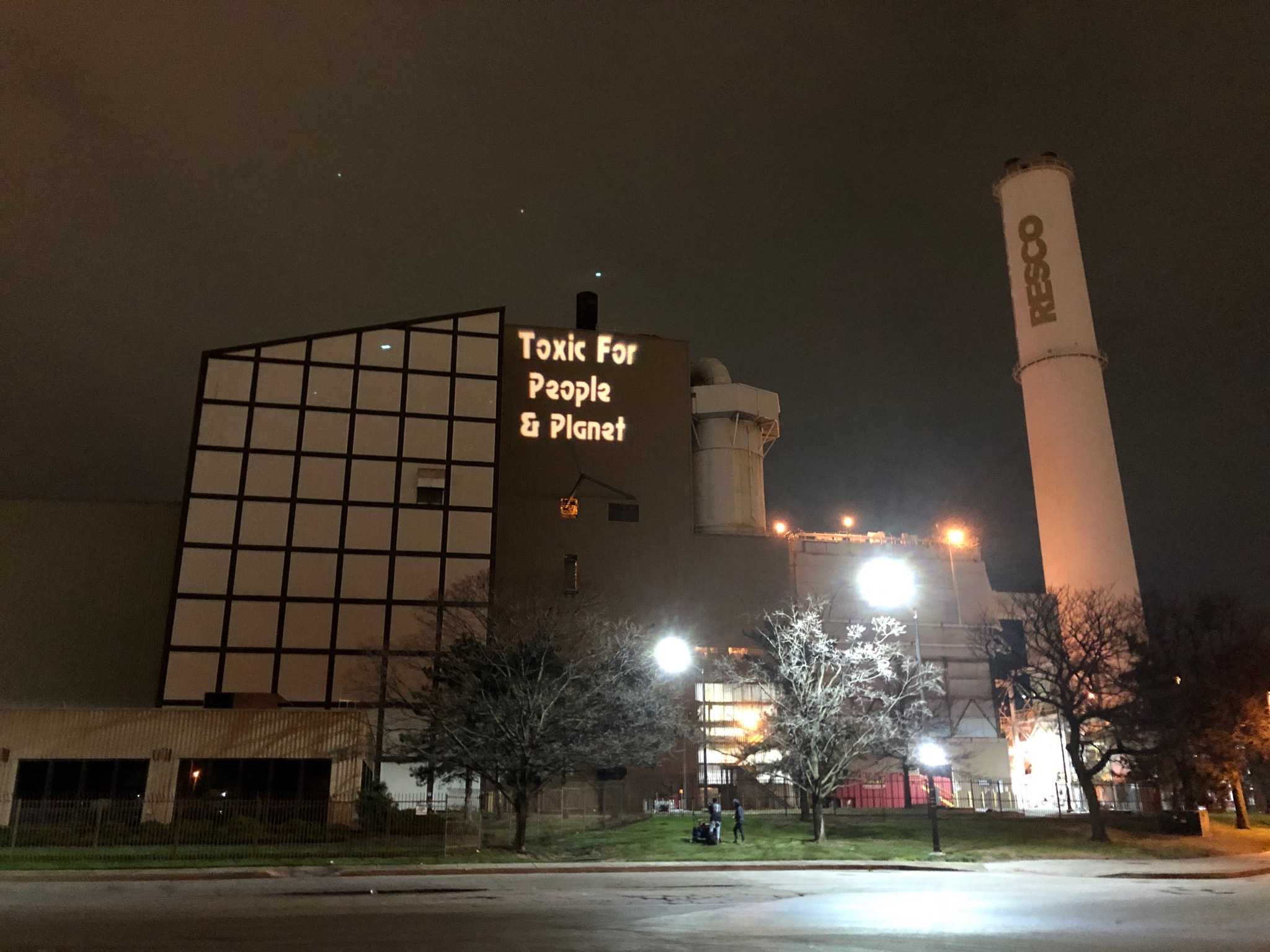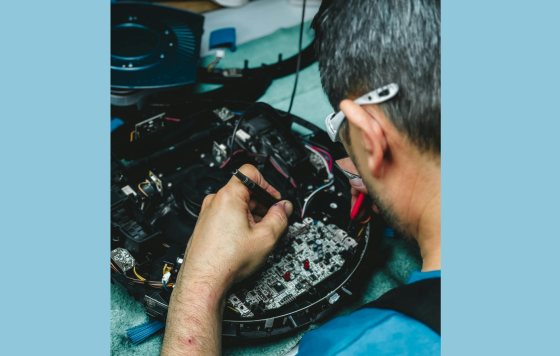
Today, the House Economic Matters Committee is holding a hearing on HB438, a bill to correct a mistake Maryland made nine years ago: to call trash incineration renewable energy, and subsidize it with money meant to support new wind and solar power. We submitted this joint testimony signed by 33 organizations in Maryland.
Testimony Supporting HB438 & SB560
House Economic Matters Committee | Senate Finance Committee
February 20, 2020 | February 25, 2020
Position: Support
As 33 Maryland-based organizations working to support the health, environmental wellness, economic well being, and climate resiliency of Maryland communities, we urge you to vote yes on HB438/SB560 and end the practice of subsidizing trash incineration as “clean energy” under Maryland’s Renewable Portfolio Standard. Burning trash cannot be considered clean energy, and Maryland ratepayers can no longer be required to subsidize facilities that pollute their communities. Transitioning to truly renewable energy and alternative methods of waste disposal will create more jobs in Maryland, and this is a transition that our communities are ready to make.
Trash Incineration Harms the Climate and Does Not Meet the Goals of the RPS Program
When incinerators burn trash, they emit more greenhouse gasses per unit of energy generated than even coal, the dirtiest of fossil fuels. In 2015, the Wheelabrator Baltimore incinerator emitted roughly double the amount of greenhouses gases per unit of energy produced, on average, by each of the 7 coal plants located in Maryland. The Dickerson trash incinerator in Montgomery County produces 500,000 tons of greenhouse gases that contribute to climate change. Climate change poses multiple threats to Maryland residents, including increased precipitation, more frequent and severe flooding, and rising summer temperatures that increase outdoor air pollution levels. The financial support that Maryland’s Renewable Portfolio Standard provides must be used to support the development of new renewable energy projects that will help Maryland face and fight climate change, not to prop up aging trash incinerators.
Maryland’s Renewable Portfolio Standard (RPS) was enacted in 2004 to facilitate a gradual transition to renewable sources of energy. Because of its impact on public health and on climate change, trash incineration cannot be considered renewable energy. According to the Department of Legislative Services’ analysis of this legislation, about 10% of Renewable Energy Credits in 2017 were from trash incineration. If applied to other Tier 1 renewable energy sources instead of incineration, these credits would support new high-paying Maryland jobs, increase GDP due to construction of new Maryland-based renewable energy infrastructure, and reduce Maryland’s carbon emissions.
Trash Incineration Harms our Health
Trash incineration contributes to the air pollution in Maryland that causes chronic illnesses among Maryland residents. To produce the same amount of energy, Maryland’s trash incinerators emit higher levels of mercury, lead, nitrogen oxides (NOx), carbon monoxide (CO), and carbon dioxide (CO2) than Maryland’s coal plants.[2] The process of incinerating trash creates an especially dangerous set of compounds called dioxins, declared by the World Health Organization as a known human carcinogen; dioxins are also linked to diseases of the immune system, endocrine system, nervous system, and reproductive system.
Air pollution is an enormous problem in Baltimore City, surrounding the BRESCO trash incinerator: according to an Environmental Integrity Project report, the average rate of asthma-related hospitalizations in Baltimore City is approximately twice the average rate of Maryland and three times the average rate of the United States. Even worse, there is a distinct association between asthma hospitalization in Baltimore city and median household income. The Baltimore area has long been classified as the U.S. EPA as failing to meet federal ozone standards. The BRESCO trash incinerator contributes to this problem, emitting over 1,000 tons of NOx pollution annually. NOx also contributes to the formation of fine particles, a pollutant that has been associated in studies with premature death from heart and lung disease, and is a serious trigger of asthma attacks. According to a Chesapeake Bay Foundation commissioned study, fine particulate matter emitted from the Wheelabrator Baltimore “waste-to-energy facility” causes over $55 million in adverse health effects annually.
The Montgomery County Resource Recovery Facility is the second largest air polluter located in Montgomery County. This facility produces approximately 740 tons of air pollutants and sends 180,000 tons of toxic ash to landfills in Virginia. Air pollutants from waste incinerators have also shown to increase the risk of pre-term births, and lung and blood cancers. An Environmental Integrity Project assessment shows that the Montgomery County and Baltimore City incinerators emit higher levels of mercury, lead, nitrogen oxides (NOx), carbon monoxide (CO), and carbon dioxide (CO2) than coal plants. In Baltimore, Montgomery County, and throughout the state of Maryland, trash incineration contributes to air pollution that harms residents’ health; those residents should not be required to subsidize this pollution through the Renewable Portfolio Standard.
Alternatives to Trash Incineration Create More Local Jobs
Truly clean, renewable energy creates jobs in Maryland. The State has more than 218 solar companies and over 5,400 solar jobs. The wind industry has brought more than $380 million in private investment into Maryland’s economy, to date. These jobs in clean renewable energy lead to good-paying careers within these industries and across related economic sectors. New clean energy development made possible by removing “waste-to-energy” incineration from the RPS, and therefore making credits available to other Tier 1 energy sources, will further support the development of these economic sectors in Maryland.
Multi-Faith Alliance of Climate Stewards - Frederick County
Sunrise Movement Baltimore
Runners4Justice
Turner Station Conservation Teams, Inc.
Filbert Street Garden
Takoma Park Mobilization Environment Committee
Baltimore Free Farm
Echotopia LLC
Baltimore Community ToolBank
CCAN Action Fund
Sunrise Movement Howard County
Sugarloaf Citizens Association
Go Green OC
Maryland Legislative Coalition
Maryland WISE Women
Greenbelt Climate Action Network
Cedar Lane Unitarian Universalist Church Environmental Justice Ministry
Unitarian Universalist Legislative Ministry of Maryland
Maryland League of Conservation Voters
Nuclear Information and Resource Service
Maryland Legislative Coalition
Indivisible Towson
Earth Forum of Howard County
Waterkeepers Chesapeake
Mountainside Education and Enrichment
Maryland Public Health Association
MOM's Organic Market
Blue Water Baltimore
IndivisibleHoCoMD
Key City Compost
Maryland Conservation Council
Food & Water Action


